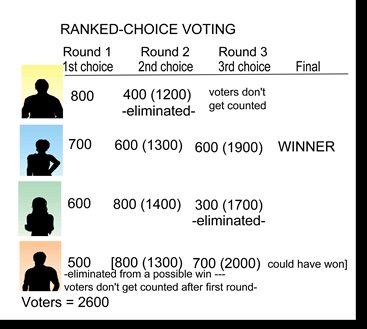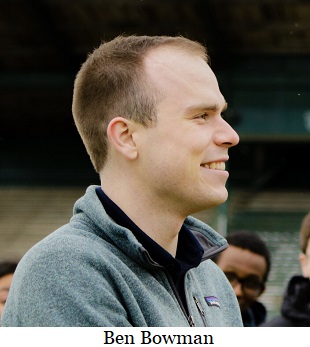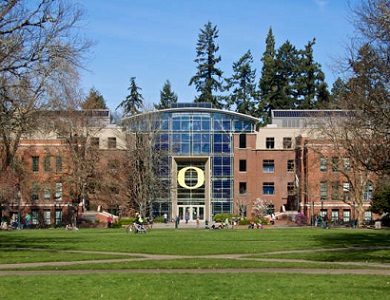
On this day, July 12, 2013, the Oregon Fish and Wildlife commission adopted provisions of a lawsuit settlement that will make the state the only one in the West where killing wolves that attack livestock must be a last resort.
 Post an Event
Post an Event
| TILLAMOOK COUNTY FAIR - 100 YEARS OF PIG N'FORD |
| Wednesday, August 6, 2025 at 10:00 am |
| The Tillamook County Fair received its recognition as one of the top ten Blue Ribbon Fairs in the nation due to its uniqueness; offering so much for fairgoers to enjoy free along with their paid admission. Fairgoers can enjoy all of the Open Class and 4-H/FFA exhibits that Tillamook County residents have prepared the year prior, free entertainment and concerts, live exotic animal displays, and a whole lot more!
FOR MORE INFORMATION
tillamookfairoffice@gmail.com
(M-F, 8 AM-5 PM) at (503) 842-2272.
Reminders:
NO OUTSIDE FOOD OR DRINK
All bags are subject to search
For the safety of all present, only trained service animals are permitted to enter Fairgrounds property. A trained service animal is any guide dog, signal dog, or other animal individually trained to do work or perform tasks for people with disabilities. |
| 4603 East 3rd Street
Tillamook, OR, 97141 |
Small doctor-owned clinics are being bought up by large corporations and private equity firms
Oregon Representative Ben Bowman (D-Tualatin) participated on a panel at a Salem City Club event about the rapid trend of corporations and private equity firms acquiring local medical practices. He writes, “In the last 10 years, there has been a
100,000% increase in private capital invested into primary care. The scale of that increase alone should give us all pause.”
Bowman reports, “Across our state and the country at large, small doctor-owned clinics are being bought up by large corporations and private equity firms. When you replace a locally-based physician owner with a private equity firm there are serious, negative consequences. Prices go up, quality of care declines, injuries increase, and physicians burn out. In short, worse care at higher prices.
We are seeing the harm of not acting in real-time.”
Bloomberg writer, Angelica Peebles, says, “Several large companies are also making a push towards primary care in an effort to control access to more expensive specialists and influence patients' treatments over time. For example, CVS Health plans to put doctors in up to 350 of its retail pharmacies…Walgreens Boots Alliance last year purchased a controlling stake in the primary care clinic chain VillageMD, which it previously partnered with to open new primary care clinics across the United States…health insurers are expanding their primary care capacities. UnitedHealth Group's Optum unit now has more than 60,000 physicians, around half of whom are in primary care… Humana plans to open 26 new primary clinics under its CenterWell brand this year and will add between 30 to 50 more annually.
According to Peebles, this interest in primary care is partly motivated by a shift in how medical care is paid for. Private health plans, as well as government programs like Medicare, are increasingly turning towards value-based payment, which links doctors' pay to patients' health outcomes, rather than volume-based payment. This change may increase the risk that profit motivation could eventually outweigh patients' best interests.
Bowman wants to bring legislation in 2025 that will address this growing problem. He sites thousands of patients in Eugene received letters informing them that their local clinic, the Oregon Medical Group, could no longer provide care for them. They would have to find a new doctor.
Independent Health News reports that UnitedHealth’s vehicle for growth – and more profits – is its Optum Health division. Observers say the consolidation could improve the quality of care — or lead to higher prices as the corporate owners exploit their greater control.
Since the purchase of Oregon Medical Group, close to 30 physicians have left the clinic and, due to the contracts they signed with United Health, were forced to either retire from the practice of medicine or leave the community they had made their home. Those leaving the clinic reported that UnitedHealth’s focus on efficiency and profit left them feeling disillusioned and unable to provide the best care for their patients.
Bowman also reports that Oregon’s Coordinated Care Organizations (CCO), are having very important and very-under-the-radar conversation going on around the Oregon Health Plan and CCO’s model serving Medicaid population. The goal of Oregon’s CCO model is to provide a coordinated service delivery model to promote physical, behavioral, and oral health.
CCO’s were established in 2012 and is thought to have bent the cost curve. The second round of “procurement” in 2020, CCOs were given contracts and performance metrics setting the goals for the entities that provide care to low-income families. The behind closed-door meetings are for a third round of procurement. This will likely be the largest procurement process the state has ever done according to Bowman. It involves investing millions of dollars to ensure Oregonians are well cared for, and how it is distributed, and what benchmarks are set for the entities who are awarded contracts.
A D V E R T I S E M E N T

A D V E R T I S E M E N T
Bowman releases his goals for legislation to enact the next procurement process:
- Ensuring every Oregonian has access to a basic level of quality health care.
- Incentivizing upstream investments in health that lower the cost of providing medical care in the long run.
- Providing stability that ensures CCOs are rooted in the communities they serve.
- Providing flexibility so that CCOs are able to innovate and build local partnerships that better serve the needs of the people they serve.
- Ensuring there are clear accountability measures directly connected to the health outcomes of people and populations.
These sound oddly familiar to the Oregon State University
2023 Health Care Workforce Needs Assessment report done in accordance with
HB 3261 for the Oregon Health Authority. It exposed a severe health care crisis and higher than expected, partially from burnout after the pandemic. The report recommended improved support for health care professionals, expand telehealth and integrated care models, and increase the use of community-based care providers like health interpreters and peer wellness specialists to connect on a more personal level with their local communities. Had this report been acted on, would the small doctor-owned clinics been saved?
Since voters passed the right to health care, Governor Kotek hasn’t supported the universal health care board proposed cost of $2 million plan. She says it’s costly and cited potential duplications. Kotek has prioritized behavioral healthcare in response to
HB 4002. Oregonians shouldn’t be surprised that UnitedHealth is positioning their clinics to meet Kotek demands on cost reduction while expanding free care to non-insured non-residents, covered treatment for reproductive care (abortions and transitioning), the need for specialized behavioral health physicians, and the projected CCO procurement process to cover universal healthcare. It all adds up to unsustainable budgets and higher taxes.
--Donna Bleiler| Post Date: 2024-06-03 11:37:59 | Last Update: 2024-06-03 22:56:48 |
A more disciplined approach to the budget would lessen the burden on taxpayers and improve economic stability
Oregon's
June revenue forecast released by the Office of Economic Analysis indicates, despite big surpluses, significant economic challenges are ahead due to stagnant growth and high inflation. Republican leaders call for adopting a more disciplined approach to the state’s finances would help lessen the burden on taxpayers and improve economic stability.
Senate Republican Leader Daniel Bonham (R-The Dalles) said, “Across the state, Oregon families are having to tighten their budgets and make difficult choices as rising costs due to high inflation outpace their earnings. It’s time the state does the same. The latest revenue forecast indicates that the state has continued to take more than enough of our hard-earned tax dollars. The Legislature – like many of our friends and neighbors – must learn to live within its means.”
“As we navigate through this period of high inflation, rising costs, and stagnant growth, our caucus will continue to advocate for budgetary restraint to ensure the long-term viability of essential services. The Oregon Legislature must act. Soaring energy prices are an example of an inflationary pressure we can actually do something about. Through fiscal accountability and responsible spending, Senate Republicans offer policy
solutions that would provide tangible relief to working Oregonians and protect the financial well-being of all Oregon families.”
A D V E R T I S E M E N T

A D V E R T I S E M E N T
Inflation's effect on Oregonians doesn't seem to matter to Governor Tina Kotek. Government greed is the cause for inflation, and Kotek just keeps spending. Recently she proposed a $40 million investment to sustain container service at Port of Portland’s Terminal 6. This includes $35 million from her 2025-2027 budget that includes a $20 million invested into a capital program that supports ports with active container service. It is unclear where this money would go since it appears that Port of Portland Terminal 6 is the primary and could be the only container port in Oregon. The other $15 million will be dedicated to initial state funding for costs associated with the Lower Columbia River Channel Management Plan. However, only $5 million that she is requesting from the legislative Emergency Board will go to directly resolve the shortage at Terminal 6.
Kotek response on the forecast, “Oregon’s economy continues to be stable and productive. We have made meaningful progress on issues of top concern for Oregonians and worked to move our economy in the right direction. I look forward to continuing to partner with the legislature to focus on meeting people’s needs in every part of the state, from housing to safe schools to behavioral health services.”
--Donna Bleiler| Post Date: 2024-05-31 11:03:20 | Last Update: 2024-05-31 01:17:48 |
“Make sure you’ve renewed your registration and put the decals on your boat correctly, or you could face a $265 citation.”
The Oregon State Marine Board, chaired by Laura Jackson, in partnership with 31 county sheriff’s offices and the Oregon State Police, will be looking for expired boat registrations and required equipment compliance on state waterways as part of “Operation Ship Shape.”
“Boat operators are required to have current registration decals on the bow of their boats and carry the Certificate of Number on board,” says Brian Paulsen, Boating Safety Program Manager for the Marine Board. “Make sure you’ve renewed your registration and put the decals on your boat correctly, or you could face a $265 citation.”
Any boat powered by a motor – electric, gas, diesel, and all sailboats 12 feet and longer must be currently registered when on the water, even when docked or moored. This includes any kayaks and drift boats with an electric motor. Paulsen added, “Each current boat registration brings in additional federal funds which go back to boaters for program services.”
Motorboat registrations are valid for two calendar years and expire on December 31st of the second year. The cost for registration is $5.95 per foot rounded up, plus $5.
Paddlers with boats 10 feet and longer must carry a Waterway Access Permit. Three permit options are available: One week for $5, one calendar year for $17, and two calendar years for $30.
A D V E R T I S E M E N T

A D V E R T I S E M E N T
Boaters can renew their registration or purchase Waterway Access Permits through the agency’s Boat Oregon Store for the fastest service. After completing their online transaction, boaters with motorized boats can print off a temporary permit. Waterway Access Permits can be printed directly after purchase. Multiple purchases can be made under one online transaction. The agency’s online store has a $1.50 portal provider fee. If you need assistance online, please contact the Marine Board at marine.board@boat.oregon.gov or call 503-378-8587. There's also an online help page acclimating new users to the store.

Marine officers will also be looking for the required safety equipment. “Life jackets are the most important safety equipment boaters must carry, and there must be enough on board that fit every passenger,” Paulsen adds. “We’ve seen three years of declines in boating fatalities and want this year to be the safest on record. In 2023, 11 out of 13 victims were not wearing a life jacket, so find a life jacket you’ll wear for the type of boating you’re doing.”
For any titling and registration questions, visit
Boat.Oregon.gov and click on the Title & Registration tab at the top of the page.
--Staff Reports| Post Date: 2024-05-30 13:46:46 | Last Update: 2024-05-30 14:00:28 |
A K-9 alerted to the presence of illegal substances
Four Oregon State Police traffic stops along Interstate 5 have yielded significant drug seizures in the last month. Oregon State Troopers seized fentanyl, methamphetamine, PCP, and other illegal drugs bound for Oregon streets. The targeted operations are a collaboration among Oregon State Police patrol, K-9, High Intensity Drug Trafficking Areas Investigation Team, and Criminal Apprehension through Patrol Enforcement programs.
OSP Capt. Kyle Kennedy said, “Oregon State Police is diligently working to stop the flow of illegal drugs to our communities. Fentanyl continues to have devasting effects on Oregon’s communities, and we hope the constant pressure will deter and prevent the transportation of illegal drugs to and through our state.”
On Wednesday, May 8, 2024, at 9:50 a.m., an OSP K-9 trooper stopped a vehicle on I-5 in Linn County for a traffic violation. During contact with the driver, the trooper suspected possible criminal activity. A K-9 was deployed around the outside of the vehicle and alerted to the presence of illegal substances. During a search of the vehicle, the trooper located 10,000 pills suspected to be laced with fentanyl in the vehicle’s trunk.
On May 14, 2024, at 1:13 p.m., an Oregon State Trooper from the Salem Patrol Office stopped a vehicle for a traffic violation on I-5 near milepost 256 in Marion County. During the stop, the trooper observed contraband in the vehicle and suspicious behavior by the vehicle occupants.
During a consent search of the vehicle, the trooper located 4.6 pounds of fentanyl, 1 pound of PCP, 84 grams of suspected methamphetamine, and 14.2 grams of cocaine.
The driver, Edgar Izaguirre Torres (33), whose city of residence is unknown, and the passenger, Marvin Fabian Oseguera Escoto (19) of Auburn, WA, were arrested for distribution of a controlled substance. Once the investigation is complete, additional charges will be referred to the prosecuting agency.
A D V E R T I S E M E N T

A D V E R T I S E M E N T
Oseguera Escoto was additionally arrested on a California warrant for distribution of a controlled substance.
On May 21, 2024, at 8:40 a.m., an OSP K-9 Trooper stopped a vehicle for a traffic violation on I-5 northbound at milepost 148. The trooper contacted the vehicle occupants and noticed signs of criminal activity. The driver and passenger fled from the vehicle on foot. The trooper caught and detained both suspects a short distance from the vehicle.
The K-9 was deployed around the outside of the vehicle and alerted to the presence of illegal substances. A search warrant was granted, and 42,000 suspected fentanyl-laced pills and approximately 8 pounds of fentanyl powder were found inside the vehicle.
The driver, Lauro Parra Moreno (25) of Pittsburgh, CA, was arrested for misdemeanor elude, criminal trespass II, Possession of a controlled substance II, and Delivery of a controlled substance I. The passenger, Jesus Acosta Parra (20), of Pittsburgh, CA, was arrested for criminal trespass II, delivery of a controlled substance II, and possession of a controlled substance II.
The investigation is ongoing, and no further information is available for release at this time.
On May 23, 2024, at approximately 11 a.m., an Oregon State Police K-9 Trooper stopped a vehicle for a traffic violation on I-5 near milepost 225 in Linn County. The vehicle was occupied by an adult couple and their 6-month-old infant.

During a consent search of the vehicle, the trooper located 136 grams (about one-third of a pound) of fentanyl powder and mannitol, which is a common cutting agent for fentanyl. The fentanyl was located in the trunk of the vehicle near the baby’s formula and clothing.
The driver, Meslin Danexi Gamez Barrientos (30) of Oakland, CA, was arrested for possession and delivery of a controlled substance and endangering the welfare of a minor. The passenger, Maryori Estefani Ochoa Chapas (30) of Oakland, CA, was arrested for possession and delivery of a controlled substance and endangering the welfare of a minor.
The infant was placed in protective custody by the Oregon Department of Human Services.
--Staff Reports| Post Date: 2024-05-29 13:16:06 | Last Update: 2024-05-29 13:54:53 |
Best interest means Oregon has a moral and upright standard
Julia Shumway wrote a good article in the
Capital Chronicle on the Primary Republican election results and the shifting of styles. She writes, “No Senate Democrats faced primaries, and control of the chamber isn’t expected to change.” That may be the impression she gets from interviewing the defeated, coupled with a low turnout. But, don't forget, the largest block of voters have yet to weigh in.
The GOP senate is faced with more challenging races only because Democrat Senate president Rob Wagner barred several GOP senators from running for reelection by his biased application of policies – approving leave for Democrats that wasn’t approved for Republicans. Two of them gave notice of retirement.
What seemed to influence her article is political consultant Bryan Iverson, losing his campaign for Rep. Christine Goodwin to Noah Robinson, whom he called an “obstructionist” candidate. Iverson said, “In the Republican primaries, at least in southern Oregon, you see victories by the same hard-right-leaning candidates and not the everyday Republicans.” Maybe his campaign put Goodwin in a devious light, setting up a questionably phony residence, and creating a last-minute pro-gun organization to sway voters was more “obstructionist” than the opponent.
Iverson told
Capital Chronicle, Josephine County – or at least the Republicans in the area who showed up to vote – made it clear they wanted a different style of candidate. “They want that brand of Republicans that are just obstructionist, basically. I think that they were pushing for that from the get-go, and that’s obviously how it turned out. That’s not what Chris wanted to represent, she wanted to represent those people and have a different way of going about it than I think Noah would, but that’s not what the people wanted.”
What Iverson complained about in District 2 certainly wasn’t the case in District 1 – where the “everyday Republicans” carried the status quo vote. David Brock Smith and challenger Todd Vaughn was the most visibly ugly campaign Oregon has seen in a long time. It was started by Brock Smith when he refused to respond to radio host Rob Taylor on his relation with a California donor who has ties to China. The implication angered Brock Smith, and he still hasn’t fully explained his relationship. He was then asked to justify his flip-flopping on the ocean windmill farm proposed off the coast of Coos County. The combination spearheaded an ugly campaign out to destroy each other leaving voters to figure out the truth amidst all the accusations. Brock Smith won by 57% of the vote, but you can be sure voters are watching whether he will flip again and support ocean windmill farms.
Iverson’s “obstructionist” candidate might define Diane Linthicum who beat Klamath County Commissioner Dave Henslee. Henslee seems to think that it’s all about the money. He said of Diane, “She completely supports Dennis Linthicum’s voting record, and in my opinion, his voting record hasn’t benefited our district. I was running for people and for our district, and to try to move the needle and do some really positive things for District 28, and unfortunately, the voters didn’t see it the same way I did.”
Henslee’s view is precisely why the vote for Greater Idaho is now 13 counties strong. They are tired of metro legislators being focused only on their districts and not looking out for the best interest. For the best interest of all Oregon, there needs to be a moral and upright standard for the entire state. In that there is no compromise. Dennis Linthicum would not lower his moral values to compromise even at the threat of his position.
Former House Republican Leader Mike McLane won District 30 to replace retiring Sen. Lynn Findley and is looking forward to meeting with Senator Daniel Bonham and Senate President Rob Wagner on policy decisions. He says, “During my time as a judge, I saw in the courtroom the consequences of policy passed in Salem, and it just shaped in me a view that perfection is often the enemy of the good.” His ultimate goal is to get something that works.
A D V E R T I S E M E N T

A D V E R T I S E M E N T
Todd Nash, Wallowa County Commissioner, won District 29 to replace retiring Sen. Bill Hansell representing northeast Oregon. His plans to meet with natural resource groups including the Oregon Farm Bureau and the Oregon Cattlemen’s Association, may label him as an “obstructionist” according to Iverson. The attack that Democrat leadership is hurling at small farms will affect everyone, and voters can’t afford to ignore.
Other Senate races will have a steep battle against Democrat opponents, but more often than not, “obstructionist” candidates have received more voter attention from nonaffiliates than the status quo. It is the reason they chose not to register with a party. If voters remember that, “obstructionist” candidates will do well.
- District 5: Dick Anderson(R) vs. Jo Beaudreau(D)
- District 12: Bruce Staff (R) vs. Scott Hooper (D)
- District 14: Shane Bolton (R) vs. Kate Lieber (D)
- District 18: Brian Pierson (R) vs. Wlnsvey Campos (D)
- District 22: Michael Saperstein (R ) vs Lew Frederick (D)
- District 25: Raymond Love (R) vs. Chris Gorsek (D)
- District 27: Michael Summers (R) vs. Anthony Broadman (D)
--Donna Bleiler| Post Date: 2024-05-27 19:44:25 | Last Update: 2024-05-27 22:21:35 |
The public is invited to testify at each of the 12 stops
In March, public pushback caused Governor Tina Kotek to tell ODOT to halt tolling plans until January 2026. The Joint Committee on Transportation to the rescue with a plan to appease public opinion, they scheduled 12 meetings throughout the state. They announced that Portland Community College will be the venue for the first meeting of the Transportation Safety and Sustainability Outreach Tour.
"Safe, sustainable, multimodal transportation systems are of critical importance to local, regional, and even international travel and commerce between urban and rural communities," said Rep. Susan McLain (D-Hillsboro, Forest Grove and Cornelius), co-chair of the Joint Committee on Transportation. “We’re working to ensure that all communities, all families, and all businesses are provided with choices that are safe, resilient, and sufficient to meet transportation needs.”
Sen. Chris Gorsek (D-Troutdale), co-chairs of the Joint Committee said, "Each stop on this tour is going to give us a greater perspective of the transportation needs in Oregon and how best to tackle the structural challenges we are facing."
The first public hearing will be held on June 4 from 5 p.m. to 7 p.m. at the Portland Community College Cascade Campus Moriarty Auditorium at 705 N. Killingsworth Street. It will also be available via
livestream. Members of the public interested in testifying can register in person starting 30 minutes before the meeting begins. The committee will also hear remote testimony if time permits, if
registered, and written testimony can be submitted via email to JCT.exhibits@oregonlegislature.gov.
Preceding the meeting, members of the committee will take a guided trip of transportation facilities in the Portland metro area at noon, and hold a roundtable discussion at 2:30 p.m., which will help them understand the transportation needs of that region through the expertise and lived experience of local partners and officials. A full agenda of the day with
registration information.
A D V E R T I S E M E N T

A D V E R T I S E M E N T
The objective of the tour is to gain perspectives and gather information to inform legislators as they develop a plan in the 2025 session to maintain critical infrastructure, complete work on major projects, and guarantee the safety and diversity of transportation systems across the state.
Tour locations and dates (venues to be announced later):
- Downtown Portland - Tuesday, June 4
- Tillamook - Tuesday, June 18
- Albany - Tuesday, July 16
- Eugene - Wednesday, July 17
- Coos Bay - Wednesday, August 7
- Medford - Thursday, August 8
- Ontario - Wednesday, August 28
- Hermiston - Thursday August 29
- Bend - Thursday, September 12
- The Dalles - Friday, September 13
- Happy Valley - Thursday, September 26
- Hillsboro - Friday, September 27
The committee is vice-chaired by Sen. Brian Boquist (R - rural Polk and Yamhill counties) and Rep. Shelly Boshart Davis (R - Albany, Millersburg, and Tangent). The full membership of the committee can be viewed on olis.oregonlegislature.gov.
--Donna Bleiler| Post Date: 2024-05-26 14:47:12 | Last Update: 2024-05-26 16:59:48 |
Cutting DEI could salvage Oregon’s education system
The Oregon Association of Scholars, an affiliate of the National Association of Scholars, released
Issue Brief 13 examining the costs and reach of Diversity, Equity, and Inclusion (DEI) bureaucracies at the three largest public universities in Oregon.
The brief reports that public universities, Oregon State (OSU), Portland State (PSU), and University of Oregon (UO), in 2020 were spending an average of $1.7 million per year in annual costs for salary and benefits for DEI Vice Presidents and an average of 19 full-time staff for each DEI office. The DEI offices for all three universities expanded their investment to a shocking $7,255,758. This has contributed to nearly $3,000 increase in tuition costs for the same period. The brief asks “the question of what the universities, the students, potential employers, and the people of Oregon are getting out of these large investments and the concomitant hyper-intense institutional focus.”
A
Heritage Foundation study measured an average of 4.6 exclusive Diversity, Equity, and Inclusion (DEI) personnel are at major public state universities for every 100 faculty members. The study reported that DEI staff and departments urge students to embrace radical leftwing ideologies, including that people should be treated differently due to their race. The study showed DEI bureaucracies are better understood as an academic version of a political commissariat that articulates and enforces an ideological orthodoxy on campus.
In a U.S. Supreme Court landmark decision in
Muldrow v. City of St. Louis, the ruling chipped away at all DEI-based discrimination. The orthodoxy tends to make many groups of people feel unwelcome, promotes division, and encourages conformity rather than diversity on various social and political issues. Lawyers tried to argue that there is ‘good discrimination’ and ‘bad discrimination’, that white people should be purposely disadvantaged to pave the way for diversity. The lawyers stated that the court's decision will complicate DEI programs and limit their ability to discriminate against white men.
The financial costs are substantial and on their own raise questions of the utility and necessity of the DEI apparatuses, particularly with the high and continually growing costs of college. There are also questions and issues far beyond the financial costs that should cause the public and the universities to seriously consider a need to down-size or eliminate the DEI bureaucracies and its framework. Heritage analysts found that student surveys exposed the worse campus climates they have measured.
The brief states, “As the costs of college tuition continue to grow, mostly unabated, any expense that is not essential to the operation of a university, whether as a research institution or teaching students to develop knowledge and skills in their areas of study, should be heavily scrutinized. The cost of these DEI leviathans is far greater than the financial one. The loss of public trust in institutions, while difficult to quantify, is very real and the bean-counting style fixation on the distribution of identity characteristics in what should be serious institutions of inquiry and scholarship only further erodes public confidence. The level of influence of DEI dogmatism and its champions raises the serious question of if the universities themselves have wandered from the legislatively defined purposes for which they were established.”
The public university system does not exist to pursue partisan political goals or whatever mission a university may wish to adopt. “Our universities, which are supposed to serve as strongholds of rational inquiry, the unapologetic pursuit of truth, and the abrogation of fads, appear to have thrown caution and evidentiary standards to the wind as they repurposed hitherto world-class institutions in furtherance of the dogmas of “Critical Social Justice”.”
There are laws that set their overall mission and goals and the fundamental shift in direction made by DEI ideology does not align with their defined purpose. The brief states that the ideological framework that underlies DEI flows out of Neo-Marxist doctrine of Critical Race Theory (CRT), which is being pushed into K-12 schools, and fundamentally at odds with traditional civil rights discourse and the enlightenment-based ethos which is supposed to be at the heart of the university. It is not possible for a university to simultaneously embrace a framework that calls for fundamental changes to our social and political systems and remain aligned with the goal of creating an educated citizenry that can support responsible roles in a democratic society.
A D V E R T I S E M E N T

A D V E R T I S E M E N T
Additionally the brief states, there is no solid evidentiary basis that DEI implemented at the lowest level through training produces positive results. Some research has shown that they have the opposite effect of what they are advertised to do and actually increase prejudices and social tensions. A fundamental change in institutional direction at a university should be based on firmly established evidence, not untested ideological fads. Oregonian’s have a deep connection to our public universities and these institutions should honor that by returning to their core mission.
The brief concludes that these are public universities which receive taxpayer funding from the people of Oregon while claiming to serve broad, non-sectarian, interests. Alas, it is difficult to see these agendas as anything but serving narrow political ends through the implementation of unevidenced practices.
Universities tend to drive the agenda for public schools in preparation for higher education. The Heritage Foundation’s
Education Freedom Report Card reported waste in the growth of non-teaching staff, particularly “chief diversity officers.” In public schools, Oregon employs 0.76 teachers for every non-teacher.
The
Oregon Business Industry brief reported that Oregon funds education at an above-average level, yet student test scores are among the nation's worst." In the above average funding that doesn't account for the added CAT tax, businesses invest heavily in education and want their tax dollars spent effectively. "The disconnect between educational funding and performance is a competitive double-whammy for the state. Raising taxes on businesses substantially has eroded Oregon’s competitiveness. A continued failure to parlay this additional revenue into educational quality will erode its competitiveness further, and businesses will respond by avoiding or leaving Oregon. This will cost the state jobs, tax revenue and prosperity."
Teacher salaries are also above average, still teacher unions blame low academic results on underpaid teachers. Bending to union demands awarding above average pay raises has put school districts in the awkward position of needing deep cuts. Cutting DEI at all levels could go a long way to salvaging Oregon’s education system and benefit the economy.
--Donna Bleiler| Post Date: 2024-05-25 17:29:50 | Last Update: 2024-05-26 15:24:34 |
In honor of great men and women who gave their all
The 142nd Wing out of Portland Air National Guard Base, Portland, Oregon will conduct Memorial Day flyovers for ceremonies at locations throughout northwest Oregon and southwest Washington.
The 142nd Wing Base employs 1,500 Airmen who provide an economic impact of nearly $500 million to the region. The 142nd Wing defends our homeland with F-15 Eagle fighter jets, guarding the Pacific Northwest skies from northern California to the Canadian border through their Aerospace Control Alert mission as part of Air Combat Command and the North American Aerospace Defense Command (NORAD). Their mission is to provide unequaled, mission-ready units to sustain combat aerospace superiority and peacetime tasking any time, any place in service to our nation, state and community.
“We support the Memorial Day flyovers to honor the great men and women who have given their all in defense of this great nation,” said Lt. Col. Brad Young, 142nd Wing instructor pilot and 142nd Operations Support Squadron Commander. “We hope that conducting the requested flyovers from community organizations is additive to their ceremonies commemorating those who have lost their lives in service to this nation.”
The F-15 Eagle fighter jets are scheduled to conduct flyovers at the following community locations at, or around, the designated times on Monday, 27 May:
- 10:25 a.m. Willamette National Cemetery, Portland, Ore.
- 10:38 a.m. Wasco, Ore.
- 10:51 a.m. Forest Lawn Cemetery, Gresham, Ore.
- 10:53 a.m. Glenmoore Gracious Living, Happy Valley, Ore.
- 10:54 a.m. Mt. View Cemetery, Oregon City, Ore.
- 10:57 a.m. Calvary Cemetery, Mount Angel, Ore.
- 11:00 a.m. World War II Memorial, Salem, Ore.
- 11:01 a.m. Restlawn Memory Garden & Funeral Home, Salem, Ore.
- 11:03 a.m. Timber Linn Memorial Park, Albany, Ore.
- 11:05 a.m. Corvalis, Ore.
- 11:15 a.m. Veterans Memorial Park, Beaverton, Ore.
- 11:16 a.m. Fir Lawn Memorial Park & Funeral Home, Hillsboro, Ore.
- 11:17 a.m. Forest View Cemetery, Forest Grove, Ore.
- 11:17 a.m. Veterans Memorial Park, North Plains, Ore.
- 11:21 a.m. Vancouver National Historic Reserve, Vancouver, Wash.
- 11:38 a.m. Depoe Bay, Ore.
All passes will be approximately 1,000 feet above ground level and about 400 mph airspeed. Flights could be canceled or times changed due to inclement weather or operational contingencies.
A D V E R T I S E M E N T

A D V E R T I S E M E N T
The
142nd Wing F-15 in-flight Gopro footage from 8 May 2020's hospital flyovers in support of essential workers.
Photo Caption: Oregon Air National Guard F-15C Eagles, assigned to the 142nd Fighter Wing prepare for an afternoon training mission as part of dissimilar aircraft combat training (DACT) on Aug. 13, 2019, at the Portland Air National Guard Base, Ore. The Oregon Airmen are training with U.S. Navy F-18F Super Hornet from VFA-41 squadron, based out of Naval Air Station Lemoore, Calif., during two-weeks of DACT exercises. (Air National Guard photo by Master Sgt. John Hughel, 142nd Fighter Wing Public Affairs)
--Dollie Banner| Post Date: 2024-05-24 14:36:28 | Last Update: 2024-05-24 15:33:47 |
SB 554 stole your ability for self-defense
Oregon District 2 Representative Cliff Bentz is the only Oregon legislator to vote "nay" on the
Bipartisan Safer Communities Act. A federal judge has ordered the U.S. Bureau of Alcohol, Tobacco, Firearms and Explosives (ATF) to temporarily halt enforcement of its new rule re-defining who is considered to be "engaged in the business” of dealing firearms under federal law.
"The new ATF rule states that individuals are engaged in firearms-related business requiring licensure if the ATF determines they are acting 'predominantly to earn a profit'.” The old rules allowed private individuals to loan firearms to friends and family members or to sell their firearms to individuals without necessarily having to transact through a licensed firearms dealer.
Pro-gun states (not Oregon) argued the new rule violates the Administrative Procedure Act (APA). They contend that it goes beyond the executive branch agency’s authorization from Congress to set regulations.
The federal government argued that it derived the authority using the passage of the Bipartisan Safer Communities Act (BSCA) in June 2022. They say the definition includes firearms-related business as activity where the intent is to earn a profit. If “intent” is all that is required, then ATF can determine anything they want it to mean. The court will hear further arguments on June 2.
In the meantime, a county in Arizona is being sued over its plans to impose $1,000 fines on victims of crimes when their stolen firearm is used in a crime, and they fail to report it fast enough to authorities.
These two cases are wrapped up in Oregon’s
SB 554 passed in 2021. This law levies fines for failure to report a stolen gun with a serial number – you can be held responsible for any crime committed with guns that have been stolen from you, and your liability when you lawfully transfer a firearm is exponentially higher. In addition, under this law, you need to keep any gun you are not carrying locked up and useless, your rights to allow a minor to use one of your firearms are now extremely restricted and complicated by conflicting language, and you may no longer carry a firearm with a concealed handgun license in the Portland Airport Terminal, in the state capitol building and the grounds of any school that chooses to make its property off limits. There remains ongoing debate over contradicting language within the bill and what proponents said it would do.
SB 554 was passed during antifa and black lives matter riots, which clearly was not about “lawful self-defense.” When legislators embellished local communities with six million federal dollars through the bribery of Tina Kotek, Republican lawmakers caved and locked up their firearms and told you to do the same. Voters can't depend on courts to correct poor voting choices or that courts will protect second amendment rights.
--Donna Bleiler| Post Date: 2024-05-24 12:57:42 | Last Update: 2024-05-24 15:44:47 |
The program receives at least $12 million a year
The Oregon Department of Environmental Quality, under the direction of Leah Feldon, has announced it has opened a waiting list for the
Oregon Clean Vehicle Rebate Program. Applicants who purchase or lease eligible vehicles through June 3, 2024, still have up to six months from the date of that purchase or lease to apply for state rebates. However, high demand and limited funding mean approved applicants are now placed on a waiting list to receive rebates in early spring 2025.
Electric vehicles purchased or leased before April 3, 2024, or on or after June 4, 2024, do not qualify for state rebates, but may still qualify for federal tax credits. They will not be placed on a waiting list for rebates at a later date.
DEQ offers two rebates. Oregon residents, businesses, non-profits and government agencies may apply for one or both of the following:
- Standard Rebate: Up to $2,500 for the purchase or lease of a new eligible battery electric or plug-in hybrid electric vehicle, or a new eligible zero-emission ?motorcycle. This rebate is open to all applicants.
- Charge Ahead Rebate: Up to $7,500 for the purchase or lease of a new eligible battery electric or plug-in hybrid electric vehicle or $5,000 for the purchase or lease of a used eligible battery electric or plug-in hybrid electric vehicle. This rebate is open to low- and moderate-income households with a total household income of less than 400% of the federal poverty guideline. To determine Charge Ahead Rebate eligibility, check DEQ’s Income Eligibility Calculator.
“The good news is we are seeing more people than ever accessing the program, especially for our Charge Ahead Rebate for low- and moderate-income households," said DEQ Transportation Strategies Section Manager Rachel Sakata. "The overwhelming response to the electric vehicle rebate program shows a strong desire among those living in Oregon to embrace cleaner transportation, highlighting the need for continued and expanded support. We acknowledge the brief open window and being placed on the waiting list for next spring are problems for many who want to make the transition from a gas to an electric vehicle now. We are working with our state, local and federal partners to find ways to continue to support this critical work.”
A D V E R T I S E M E N T

A D V E R T I S E M E N T
The Oregon Clean Vehicle Rebate Program receives at least $12 million a year, or 45% of the state’s
Vehicle Privilege Tax. It is part of the state's overall
transportation climate plan.
Several state agencies and public electric utilities offer savings on EV purchases or charging infrastructure. The
Go Electric Oregon website lists available incentives and provides helpful information for potential electric vehicle buyers and lessees.
--Staff Reports| Post Date: 2024-05-23 15:30:35 | Last Update: 2024-05-23 15:48:26 |
Small garden farms are closing over required water permits
The attack on small farms first came to light when Sarah King’s small dairy ran foul of Oregon Department of Agriculture’s reinterpretation of confined animal feeding operations. Oregon has a special permitting process that typically applies to housing hundreds and even thousands of animals, as mismanaging water can have a serious impact on the local environment. For years, the state did not interpret these regulations as applying to small farms like Sarah’s. But now Oregon wants to regulate small farms like large commercial dairies.
The Institute for Justice reported that the change in interpretation to the law came from large commercial dairies insisting that small dairies somehow have a “competitive advantage” over big ones—that is, that they don’t have to install expensive infrastructure to manage waste. IJ is supporting four small farmers in a lawsuit in
Sarah King v. Oregon Department of Agriculture filed on January 24, 2024, to save small dairy farms from large commercial farm requirements.
As the lawsuit plays out, the COFA is on hold while trying to work out a solution. In the meantime, they take aim at small garden farmers that supply farmers markets and neighbors with fresh produce. You would think they learned from COFA that consequences make the Governor look bad, or maybe it was Kotek’s idea to expand the target.
The news started to spread when 24 farmers in District 2, covering Southern Willamette Valley, received letters. Now District 1 is receiving the same letter requiring them to file for a commercial water permit. These small farms cannot produce gardens without water, which means the state is shutting them down despite their refusal to acknowledge it.
Oregon has slowly been changing from a small business state to a large commercial controlled state. While the legislature bends over backward towards diversity and equity for minorities, it now appears to be a front for grooming them for large commercial jobs since small business opportunities are drying up in over regulation.
A D V E R T I S E M E N T

A D V E R T I S E M E N T
Mike McCord, head of Northwest Water District said, “officials use aerial photography, complaints from neighbors, and in-the-field observation to find potential violations. New funding in 2021 allowed the state to hire more staff for enforcement.” Was this funding intended to be used against hard working Oregonians while illegal cartel operations are stealing lots of water?
Illegal cartel operations ran the stream dry in the small town of Williams drying up wells. Oregon produces 1,200 pounds of legal cannabis per year. Cannabis is the most water-intensive crop grown in Oregon, so why aren't illegal operations their target? A formula derived from canvassing numerous cannabis cultivators suggests that one gallon of water per day is needed to produce one pound of cured cannabis flower buds. An average one-eighth acre, 100 pounds of plants, would use 24,000 gallons per growing season.
It comes down to water rights. For a water permit, there is no small amount permit for garden farms. Permits are geared towards large commercial operations. A ground permit for water is over $3,000, plus a costly study proving sufficient water levels even though most are using wells.

Oregon is 35 in rain precipitation and 27 in population use so there shouldn’t be the shortage, but Oregon hasn’t done a study to know what the best practices should be. Under the proposed new rules, the state requires the applicant to provide the proof that “groundwater levels are stable enough in their area to support a new permit, meaning if an applicant is unable to provide enough data on whether groundwater levels in the area are stable, the application will likely get denied.” This changes a five-year policy of automatically permitting even if data is uncertain, to a default ‘no’ if water levels are not proved to be sufficient.
These studies are beyond the financial ability for small farmers with a couple of animals or a half-acre garden even if water levels are known to be more than sufficient. Big corporations can easily self-certify with their experts, ultimately creating a monopoly by wiping out small and mid-size farms.
Greg Kupillas, hydrogeologist at Oregon Ground Water Association, a trade group representing commercial scale water users said, “the rules will stunt economic development.” Is it productive to give environmental groups control? If Governor Kotek cared about small farmers, why does she not change the course of the proposed rules?
--Donna Bleiler| Post Date: 2024-05-23 11:44:16 | Last Update: 2024-05-23 16:06:34 |
Supreme Court requires title change
Oregon Legislative Referral 403 (
HB 2004)is a referral to voters to consider Ranked-Choice Voting at the upcoming November 2024 General Election. The petitioner, James Sasinowski, challenged the ballot title, asserting non-compliance with requirements set out in ORS 250.035(2). LR 403 would amend ORS chapter 254 to require ranked choice voting for certain elections and would permit local governments to adopt ranked-choice voting in their elections.
The ballot title for LR 403 was prepared by a joint legislative committee and filed with the Secretary of State. Sasinowski challenged all parts of the ballot title, arguing that the word "majority" was used inaccurately and without proper context. He contended that "majority of votes" suggests that a candidate has received the majority of total votes cast, but in operation, ranked-choice voting can produce a winner who does not receive that type of "majority" vote.
The Oregon Supreme Court, in
docket case S070879, agreed with Sasinowski in part. The court found that the caption of the ballot title for LR 403 did not reasonably identify the subject matter of the measure and required modification. The court also agreed that the "yes" result statement in the ballot title for LR 403 did not substantially comply with ORS 250.035(2)(b) and required modification. However, the court disagreed with the petitioner that the "no" result statement and the summary in the ballot title for LR 403 required modification. The court concluded that the caption and "yes" result statement in the joint legislative committee’s ballot title for LR 403 required modification and referred the ballot title to the Attorney General for modification.
A D V E R T I S E M E N T

A D V E R T I S E M E N T
Judge Garrett summarizes how ranked-choice voting will work. “As defined in LR 403, ranked-choice voting would permit—but not require—a voter to rank on their ballot multiple candidates and write-in candidates, in order of the voter’s preference. Each cast ballot would be counted as one vote for each voter’s “highest-ranked active candidate.” Ballots then would be tallied in rounds; if an active candidate were to receive a majority of votes cast in the first round, then that candidate would be elected (or nominated, as applicable). Id. § 4(2)(a), (b)(A). But, if no active candidate were to amass a majority of votes, then (1) the candidate with the fewest votes would be defeated (and so no longer would be an active candidate); (2) the votes that had been counted for that defeated candidate would be “transferred to each ballot’s next highest-ranked active candidate”; and (3) a new round of tallying would begin. Id. § 4(2)(b)(B). That same process would continue until an active candidate amassed a majority of votes in a final round of tallying. Id.”

The question of what “majority” means is the majority of votes counted for active candidates in the final round of tallying, as opposed to the majority of total votes cast. In each round of tabulation some voters won't receive equal voting rights eliminating their second, third, etc. votes from being counted. The more candidates that run for a seat, the more likely a second or third choice candidate could win.
“Round” means an instance of the sequence of voting tabulation. This goes directly back to the case of Washington County vs. Tim Sippel in which Washington County was joined by Attorney General, Ellen Rosenblum, and the Secretary of State Shemia Fagan to prevent the release of the voting SQL zip files saying the public has no interest or need to know. The SQL files are the tests run on the machine's tabulation prior to the elections to see that the machines are operating correctly. It takes data from various tables it has access to, and it can manipulate that data to come up with an answer according to its protocol.
The 2024 legislature took it in their hands to remove public certification tests on voting machines in
SB 1538, which went into effect March 27, 2024. The Gartner evaluation stated the system was not qualified to meet the standards to be used for the 2024 election, but here we are, voting on LR 403 with no way to test or challenge a system completely dependent on computer tabulators. The voters need answers and a voting system that works fairly and not a run around to avoid transparency.
--Donna Bleiler| Post Date: 2024-05-22 15:07:31 | Last Update: 2024-05-22 19:32:55 |
Read More Articles












 Marine officers will also be looking for the required safety equipment. “Life jackets are the most important safety equipment boaters must carry, and there must be enough on board that fit every passenger,” Paulsen adds. “We’ve seen three years of declines in boating fatalities and want this year to be the safest on record. In 2023, 11 out of 13 victims were not wearing a life jacket, so find a life jacket you’ll wear for the type of boating you’re doing.”
Marine officers will also be looking for the required safety equipment. “Life jackets are the most important safety equipment boaters must carry, and there must be enough on board that fit every passenger,” Paulsen adds. “We’ve seen three years of declines in boating fatalities and want this year to be the safest on record. In 2023, 11 out of 13 victims were not wearing a life jacket, so find a life jacket you’ll wear for the type of boating you’re doing.”


 During a consent search of the vehicle, the trooper located 136 grams (about one-third of a pound) of fentanyl powder and mannitol, which is a common cutting agent for fentanyl. The fentanyl was located in the trunk of the vehicle near the baby’s formula and clothing.
During a consent search of the vehicle, the trooper located 136 grams (about one-third of a pound) of fentanyl powder and mannitol, which is a common cutting agent for fentanyl. The fentanyl was located in the trunk of the vehicle near the baby’s formula and clothing.
















 The question of what “majority” means is the majority of votes counted for active candidates in the final round of tallying, as opposed to the majority of total votes cast. In each round of tabulation some voters won't receive equal voting rights eliminating their second, third, etc. votes from being counted. The more candidates that run for a seat, the more likely a second or third choice candidate could win.
The question of what “majority” means is the majority of votes counted for active candidates in the final round of tallying, as opposed to the majority of total votes cast. In each round of tabulation some voters won't receive equal voting rights eliminating their second, third, etc. votes from being counted. The more candidates that run for a seat, the more likely a second or third choice candidate could win.